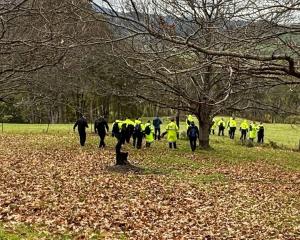Flooding, cyclones and even a Japanese encephalitis outbreak are among the risks facing Australians this summer as a leading climate body warns of a rise in "unnatural disasters".
A new report says the nation's disaster planning is not fit for purpose, adding that repeated weather events in recent times have left communities with minimal time to recover.
The Climate Council and Emergency Leaders for Climate Action are calling for a big boost in resilience funding, an end to fossil fuel subsidies and a national disaster strategy.
They say climate change has rendered existing disaster planning "no longer fit for purpose" to keep Australians safe.
The report on Australia's "new era of unnatural disasters" outlines the extent to which taxpayers are footing the bill for damage caused by floods, bushfires and other disasters while oil companies "rake in piles of cash".
"There is nothing natural about these disasters ... they are being unleashed on Australians by decades of reliance on fossil fuels," Climate Councillor Lesley Hughes said.
"These same companies are enjoying billions in public subsidies ... it's high time we end fossil fuel subsidies and use the savings to create a climate disaster fund so we can help communities deal with the fallout of compounding and worsening disasters."
Former NSW Fire and Rescue commissioner Greg Mullins said emergency responders were being overwhelmed by the scale, speed and severity of extreme weather events.
"Long-term recovery operations are also more challenging because disasters are striking more frequently," he said.
"We need to make our disaster management systems fit-for-purpose in the face of worsening climate disasters ... governments must invest in emergency services, better disaster management co-ordination, more accurate risk models and community resilience programs."
NSW flooding crisis enters 75th day
Some regional New South Wales towns could remain cut off by floodwaters for up to a month, with stranded residents relying on food and medications flown in by helicopter.
The state's flood crisis entered its 75th day on Monday after severe storms battered parts of Sydney, the Central Coast and Wollongong on Sunday night.
The State Emergency Service received 100 calls for help in the 24-hours to Monday morning - 30 of them in the Sydney metropolitan area - mostly for trees or branches falling on homes and driveways.
There are 66 flood warnings across the state - 13 of them at emergency level.
The SES flood assistance effort remains focused on the western NSW town of Euabalong where the Lachlan River has isolated the town.
Euabalong publican Neil Quinn said the town last week stared down the swollen river with a hastily-built levee bank holding back floodwaters.
"I don't know how we did it, but we stopped the river," Mr Quinn told AAP on Sunday.
It followed a tense week when the town's original flood bank began to fail and evacuation orders were issued.
Mr Quinn said the town would be relying on helicopters for supplies for at least a month.
The SES is also focused on the towns of Hay, Balranald, Brewarrina, Bourke and downstream towns, Torrumbarry, Barham, Boundary Bend and Moulamein.












